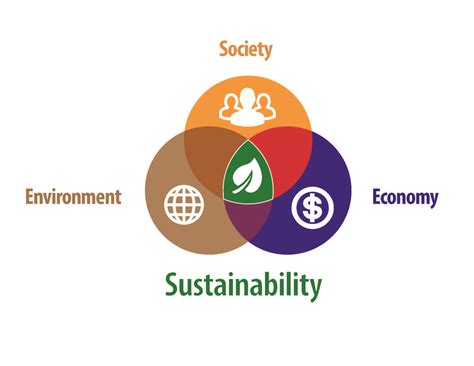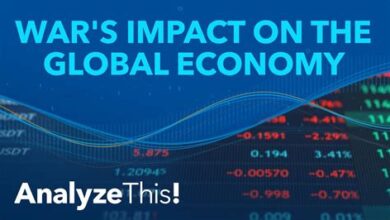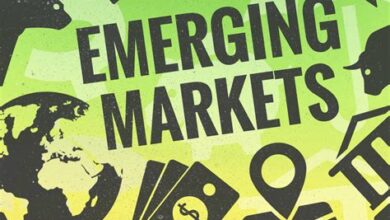Sustainable Development: Balancing Economy and Environment

Learn about sustainable development challenges, strategies, and success measures. Understand economic growth impact and environmental assessment for sustainable development.As we continue to strive for progress and development, the importance of sustainable development has become increasingly evident. In this blog post, we will delve into the concept of sustainable development, exploring its implications on both the economy and the environment. From understanding the core principles of sustainable development to the challenges presented by economic growth, we will analyze the delicate balance between progress and preservation.
We will also take a closer look at the environmental impact assessment, shedding light on the significance of taking into account the long-term consequences of development. Moreover, we will explore various strategies employed to achieve sustainable development, considering the diverse approaches and measures that can be implemented to mitigate environmental degradation.
Finally, we will discuss how the success of sustainable development is measured, emphasizing the need for comprehensive assessment tools to evaluate the effectiveness of our endeavors. Join us on this journey as we navigate the intricate terrain of sustainable development and its pivotal role in shaping our collective future.
Understanding Sustainable Development
Sustainable development is a concept that focuses on meeting the needs of the present without compromising the ability of future generations to meet their own needs. It involves finding a balance between economic growth, environmental protection, and social well-being. This approach acknowledges that all three of these aspects are interconnected and dependent on one another, and that they must be considered together in order to achieve long-term sustainability.
One of the key principles of sustainable development is the idea of equity and justice, ensuring that all members of society have access to resources and opportunities. This includes addressing issues of poverty, inequality, and social exclusion, and promoting inclusive and participatory decision-making processes. It also involves recognizing and respecting the rights of indigenous peoples and local communities, and working to protect their traditional knowledge and practices.
Another important aspect of sustainable development is the recognition of the limits of the planet’s natural resources and the need to minimize environmental degradation. This requires a shift away from unsustainable practices such as overconsumption, pollution, and habitat destruction, and towards more sustainable alternatives that promote resource efficiency, conservation, and biodiversity protection. It also involves addressing climate change and promoting the use of renewable energy sources and technologies.
Challenges of Economic Growth
Economic growth is a key component of sustainable development, but it comes with its own set of challenges. One of the main challenges is the issue of income inequality. While economic growth can lead to an overall increase in wealth, it doesn’t necessarily mean that everyone in society benefits equally. This can lead to social unrest and instability, which can ultimately hinder further economic progress.
Another challenge of economic growth is the strain it puts on natural resources and the environment. As the economy expands, it often leads to an increase in resource consumption and pollution. This can have detrimental effects on the environment, leading to issues such as climate change, deforestation, and water scarcity. Finding ways to balance economic growth with environmental protection is a major challenge for policymakers and businesses alike.
Additionally, economic growth can also lead to over-exploitation of labor and an increase in social pressures. In order to sustain high levels of growth, businesses may turn to exploitative labor practices or put pressure on workers to meet unrealistic targets. This can have negative effects on workers’ well-being and lead to an overall decrease in quality of life, despite the apparent economic progress.
Environmental Impact Assessment
Environmental Impact Assessment (EIA) is a process of evaluating the potential effects of a proposed project or development on the environment. It is a crucial step in the decision-making process, as it helps to identify and mitigate any negative impacts that the project may have on the environment. Conducting an EIA involves gathering relevant data, analyzing the potential impacts, and proposing measures to minimize or mitigate these impacts. This process provides decision-makers with valuable information to ensure that development projects are carried out in an environmentally responsible manner.
One of the key objectives of an EIA is to identify the potential environmental effects of a project and propose measures to avoid or mitigate these effects. This can include impacts on air and water quality, wildlife and plant species, and natural habitats. By identifying these potential impacts early in the planning process, developers can modify their projects to minimize harm to the environment, or in some cases, choose an alternative location or design to avoid or reduce impacts.
Environmental Impact Assessments are an important tool for promoting sustainable development, as they help to balance the needs of economic growth with environmental protection. By considering the potential environmental impacts of a project, decision-makers can ensure that development activities are carried out in a way that minimizes harm to the environment and supports long-term sustainability. This process also provides opportunities for public input and transparency, allowing the concerns of stakeholders and affected communities to be addressed in the decision-making process.
Strategies for Sustainable Development
Sustainable development is essential for the well-being of present and future generations. It is about finding a balance between economic growth, environmental protection, and social progress. However, achieving sustainable development is not without its challenges. Governments, businesses, and communities must come together to develop and implement effective strategies that promote sustainability in all aspects of society.
One strategy for sustainable development involves promoting renewable energy sources such as solar, wind, and hydro power. By reducing reliance on fossil fuels, we can lessen our impact on the environment and reduce air and water pollution. Another strategy is to invest in green technologies and sustainable practices in industries such as agriculture, manufacturing, and transportation. This can lead to reduced emissions, improved resource management, and long-term cost savings.
Education and awareness are also critical strategies for sustainable development. By teaching individuals and communities about the importance of preserving natural resources, reducing waste, and protecting ecosystems, we can create a culture of sustainability. Encouraging sustainable consumer choices and environmentally-friendly behaviors can have a significant impact on reducing our carbon footprint and preserving the planet for future generations.
Measuring Success of Sustainable Development
Measuring the success of sustainable development is essential in order to ensure that we are effectively balancing the needs of the economy and the environment. One key metric for measuring success is the improvement of quality of life for all individuals, including access to basic needs such as clean water, food, and healthcare. Additionally, the reduction of poverty and inequality within communities is a crucial indicator of success in sustainable development efforts.
Another important aspect of measuring success is evaluating the environmental impact of economic activities. This can be done through the implementation of environmental impact assessments that measure the effect of development projects on the natural world. Monitoring and reducing carbon emissions, protecting biodiversity, and preserving natural resources are all vital components of successful sustainable development.
Furthermore, the economic growth of a region or country must be considered when measuring the success of sustainable development. It is important to evaluate whether economic growth is sustainable and if it is benefitting all members of society, rather than just a select few. In order to achieve this, strategies such as promoting diversified and inclusive economic growth, investing in renewable energy, and fostering innovation and technological advancement must be implemented and closely monitored.





